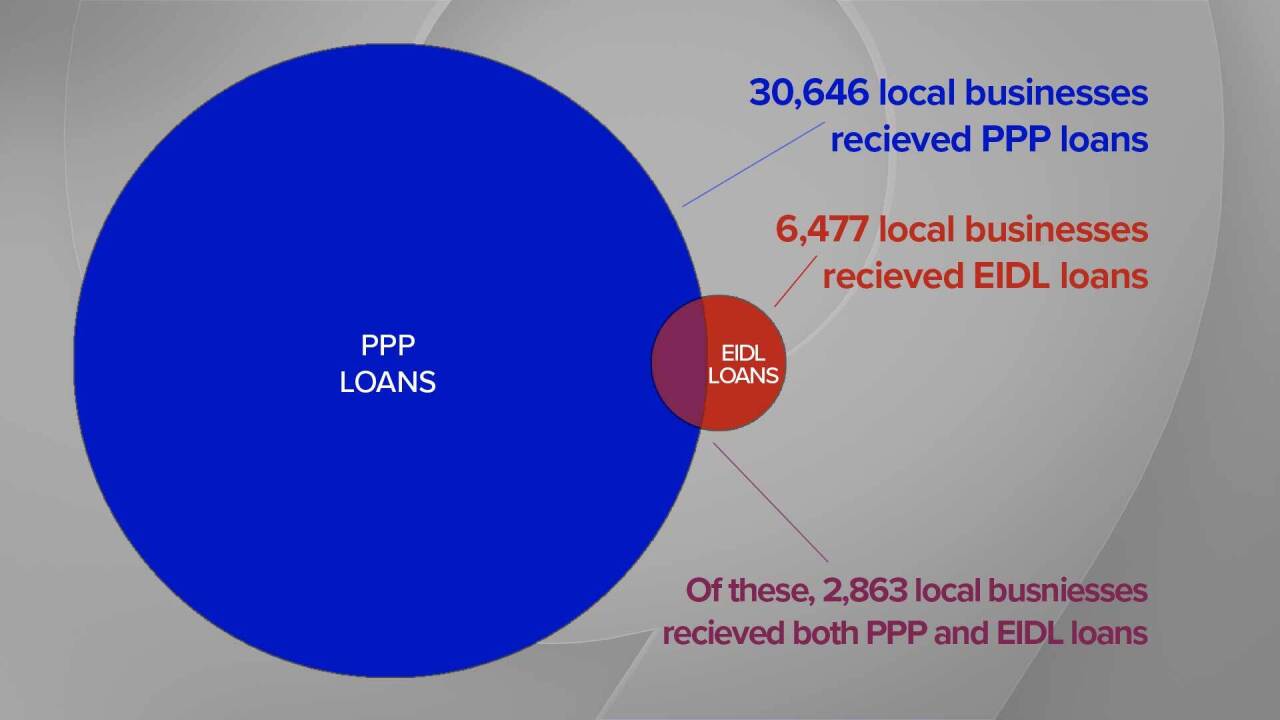CINCINNATI — Croswell Bus Lines Inc. is celebrating its 100th anniversary this year after barely surviving year 99.
“We shut everything down,” said John Croswell, fourth-generation CEO of the family business. “I had myself and my sister and our controller and my son. And that was it. Laid off everybody including family. Everybody went home.”

The Clermont County company plummeted from $10 million in 2019 sales to less than $1 million in 2020, Croswell said. The pandemic also depleted its cash reserves, as Croswell made the painful choice to refund customer payments for 1,700 canceled bus trips.
“I was in here in tears for days,” Croswell said. “We’re not wealthy people. And you’re faced with as big a crisis as you’ll have in your entire life.”
With the company’s survival at stake, Croswell had no qualms about applying for multiple loans from two small-business relief pools created by Congress last April in the $2 trillion stimulus bill known as the CARES Act.
Croswell used two corporate affiliates – Croswell Tours Inc. and Croswell of Williamsburg LLC -- to borrow $748,944 from the Paycheck Protection Program. It offered forgivable loans to companies that spent at least 60% of proceeds on payroll. Those same corporate entities borrowed a total of $943,100 through the Economic Injury Disaster Loan program, which offered low-interest loans to cover operating expenses.

The Croswell companies were among 2,863 local borrowers that dipped into both the PPP and EIDL programs in 2020, according the I-Team’s analysis of SBA data. While it was permitted by the CARES Act, and encouraged by the SBA, the rules were complicated enough to keep most companies from taking the plunge on both programs, said Sean Moulton, senior policy analyst for the Project on Government Oversight, a Washington, D.C. -based nonprofit that tracked more than $1.6 trillion in stimulus spending since last April.
“People felt a little lost and a little overwhelmed by everything,” Moulton said. “I think a lot of companies applying for the very first time applied to one or the other and left it at that.”
Stimulus Watch
The WCPO 9 I-Team has been documenting the region’s use of nearly $4 billion in stimulus loans since last summer, when the SBA first released data on the Paycheck Protection Program. But this is the first time the I-Team has analyzed EIDL data, which delivered $618 million in loans and grants to Greater Cincinnati through last July. In both programs, the I-Team has looked for evidence of waste, fraud and abuse, as federal prosecutors have alleged in more than 50 cases involving $113 million in PPP loans.
EIDL fraud has been less prevalent, according to the CARES Act Fraud Tracker compiled by the New York law firm Arnold & Porter. It identifies 150 criminal cases involving various stimulus programs nationwide, including 82 for alleged PPP fraud, 19 for EIDL and 14 for defendants accused of defrauding both programs.
Moulton said it’s impossible to tell from the data alone whether loans and grants are legitimate.
“There are definitely widespread transactions that raise serious questions,” Moulton said. “Unlike the PPP, we really don’t have anything in the reported (EIDL) data indicating the size of these companies. We get enough information to raise questions, but not enough information to resolve those questions.”
The SBA’s Inspector General, Hannibal “Mike” Ware, warned in October that the EIDL program wasn’t doing enough to keep duplicate loans from going to fraudsters who share the same IP address, email or business address. The SBA objected to that criticism, but it didn’t keep Ware from predicting that “billions of dollars in potentially fraudulent loans” had already been disbursed by the SBA.
Looking for evidence of fraud, the I-Team reviewed dozens of EIDL loans tied to the same business address and cross-checked EIDL loans with a list of canceled, dead or inactive Ohio companies. We found dozens of red flags, but no clear evidence of fraud.
But we did find lots of evidence that companies needed more than just PPP loans to survive 2020.
Tale of two companies
“We lost half of our business last year, which was quite devastating for us,” said Nancy Rozzi, president of The Rozzi Company Inc. in Loveland. “The outdoor entertainment industry, it just tanked.”
Rozzi was expecting a record sales year in 2020, but the pandemic forced the cancellation of large public gatherings. In a typical year, Nancy Rozzi said the company would use a bank loan to pay expenses until the end of the season – when revenue from events would pay off the debt.
Eventually, the company made up some of its lost revenue by selling more fireworks in its Loveland retail store and shooting the Western & Southern/WEBN Fireworks at Kentucky Speedway in September. But it couldn’t count on any of that happening when it applied for SBA loans in March.

SBA records show Rozzi borrowed $131,400 through the Paycheck Protection Program on April 8. It received a $9,000 grant from the EIDL program – or $1,000 for each of its 9 employees – on April 12.
“With the PPP money, we could not furlough anybody or lay anybody off,” Rozzi said. “We had to retain our full staff, which we did. The owners, we took a pay cut so we could keep everybody on staff. The money lasted us for about three months and then we started to get some income, some revenue coming in.”
Rozzi also borrowed $500,000 through the EIDL program on April 22, but she didn’t spend any of that money until last month. Instead, she used the company’s available cash to reduce expenses – paying off bank debt and purchasing a retail store it had been leasing for 10 years.
“We negotiated a really good price and moved out of our offices in Loveland,” Rozzi said. “We downsized. We really went in and cut costs.”
While the EIDL didn’t pay for those moves, having the money available at a low interest rate gave Rozzi some cushion to weather the uncertain year.
“Whatever we borrow we pay back right away,” Rozzi said. “This money is on a 10-year loan. We have time to pay it back. This gives us flexibility.”
Like Rozzi, John Croswell had bad news coming from every direction last Spring, when hotels and entertainment venues were forced to close because of state health department orders. That brought an abrupt halt to reliable revenue generators like national theater tours and the Harlem Globetrotters. It also brought refund demands for “somewhere in the $800,000 range,” as school-related bus trips were canceled by Kentucky health orders.
“We were faced with zero revenue,” Croswell said. “The dilemma was, ‘Do we use our cash reserves and whatever family money we could come up with to make these people whole?’ We hand-wrote 1,700 checks within a couple of days and we completely depleted the funds that we had.”
Within two weeks, Croswell’s total employment fell from 125 to four. But it couldn’t get rid of fixed costs like insurance and maintenance for its fleet of 70 buses.
“We had just leveraged up because we had some new, very exciting shuttle contracts, so we had just bought some new motor coaches and mini-buses (and) we were planning for our 100th anniversary for 2021,” Croswell said. “Our problem is, we need our fleet of buses up and ready to go at all times. We can’t just mothball things. We might need a whole fleet of buses one day and no buses for the next 30 days.”
Croswell brought 25 employees back when its PPP loans were approved April 7. That number has since risen to about 40 as the company picked up new business from hurricane relief agencies and hauling military troops to Washington, D.C. While he thinks the worst is over, Croswell said his company still has plenty of challenges ahead as he tries to lure back bus drivers who moved on to other jobs and waits for an anxious public to get comfortable with group travel again.
“We’re building a nice, big anniversary schedule. Is there going to be a pent-up demand? I would hope so,” he said. “We just got to plan for a very positive future and see what it does.”





